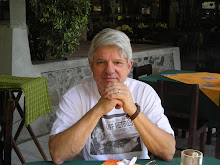In “Conflict” photojournalist Neil Jackson examines the causes and consequences of ethnic, national, and international violence. He employs 134 of his photographs along with quotations that explain and document his work. The photographs place us where we have better sense of conflict.
This is an important work that will interest anyone who wants to learn about modern history. Knowledgeable historians and astute political observers will be challenged to think deeper about the causes of conflict. Students of history at all levels will be challenged to think about who we are and why governments often act with malice.
Education doctrines that date from a century ago to the present explain much about how the western world evolved into patterns of authoritarianism, popular submission, civil war, genocide, international conflict, and atrocities.
We learn how industry, government, media, and the public and relate to values, democracy, authoritarianism, manipulation, power, domination, violence, and war.
Neil Jackson’s work supports a quote in his introduction: “Almost all conflict is about the allocation of resources. People fight in war or in civil society to get a better deal.” His work can also demonstrate that conflict stems from hatred, xenophobia, vengeance, arrogance, authoritarianism, racism, ignorance, and stupidity, as well as from the hopes and dreams of the poor and the young who seek a better life. Neil Jackson can expand his study in many directions.
How is it that the
Revolution is a form of conflict and the
War is often folly and many aggressors fail miserably. Adolph Hitler promised Germany a Third Reich that would last 1,000 years, but it lasted barely 12 years. Hitler committed suicide in a pathetic fashion to avoid the humiliation of a trial before the world, including the Jewish people he hated.
Oil is central to
Neil Jackson’s work evolves as he learns. I will check back from time to time to learn from what he is learning.




No comments:
Post a Comment